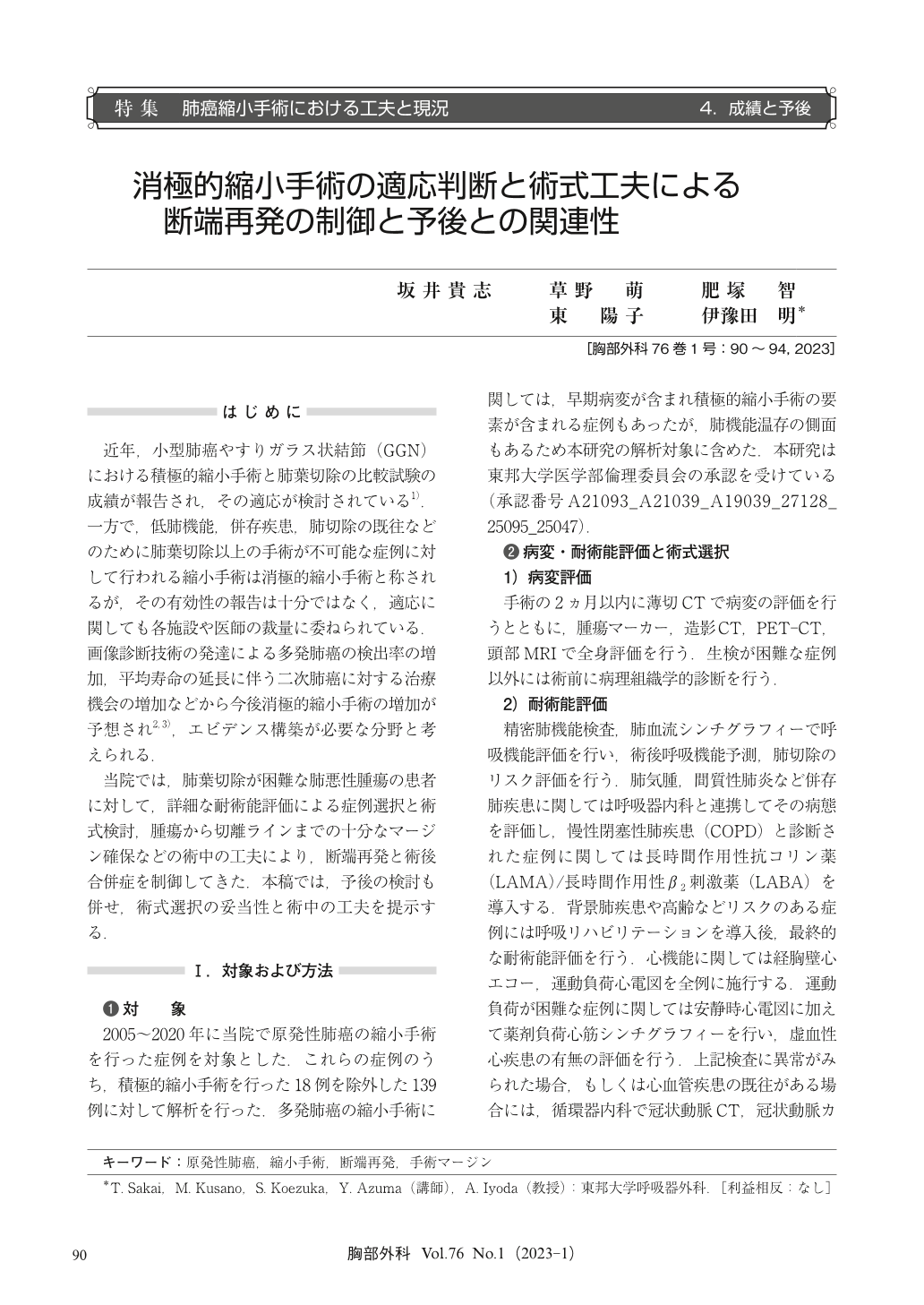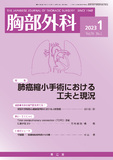Japanese
English
- 有料閲覧
- Abstract 文献概要
- 1ページ目 Look Inside
- 参考文献 Reference
近年,小型肺癌やすりガラス状結節(GGN)における積極的縮小手術と肺葉切除の比較試験の成績が報告され,その適応が検討されている1).一方で,低肺機能,併存疾患,肺切除の既往などのために肺葉切除以上の手術が不可能な症例に対して行われる縮小手術は消極的縮小手術と称されるが,その有効性の報告は十分ではなく,適応に関しても各施設や医師の裁量に委ねられている.画像診断技術の発達による多発肺癌の検出率の増加,平均寿命の延長に伴う二次肺癌に対する治療機会の増加などから今後消極的縮小手術の増加が予想され2,3),エビデンス構築が必要な分野と考えられる.
Objectives:To identify adaptations of limited resection for poor-risk patients with primary lung cancer and the efficacy of ensuring an adequate surgical margin.
Methods:A total of 139 poor-risk patients who underwent limited resection for their primary lung cancer in our institution between 2005 and 2020 were included. The efficacy of ensuring a surgical margin was determined by analyzing the rate of recurrence, and the prognosis was analyzed via the Kaplan-Meier method.
Results:Wedge resection was performed for 105 patients, and segmentectomy was performed for 34 patients. Recurrence was observed in 29 (20.8%) patients, while stump recurrence was observed in only 4 (3.8%) patients with wedge resection. The median surgical margin was 15 mm, which was equal to the median tumor size, and all histopathological margins were negative. An analysis of the 68 patients excluding those with multiple lung cancer showed that the pathological stage was not related to the prognosis. Surgical death and severe complications were not observed, and only 3 patients died of lung cancer during the observational period of 3.4 years.
Conclusions:Limited resection improves the patient’s prognosis and ensures an adequate surgical margin to control recurrence.

© Nankodo Co., Ltd., 2023


